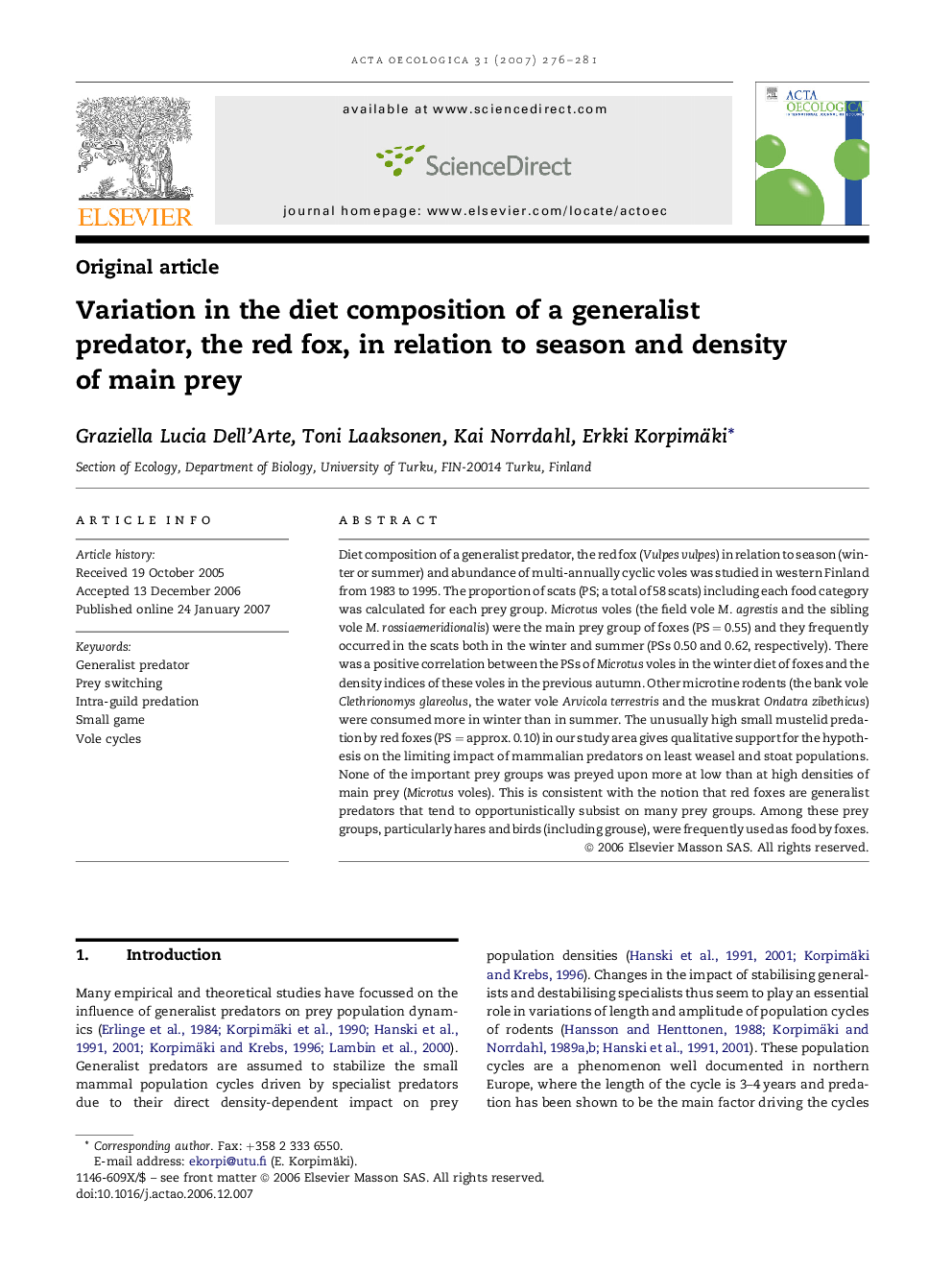| Article ID | Journal | Published Year | Pages | File Type |
|---|---|---|---|---|
| 4381654 | Acta Oecologica | 2007 | 6 Pages |
Abstract
Diet composition of a generalist predator, the red fox (Vulpes vulpes) in relation to season (winter or summer) and abundance of multi-annually cyclic voles was studied in western Finland from 1983 to 1995. The proportion of scats (PS; a total of 58 scats) including each food category was calculated for each prey group. Microtus voles (the field vole M. agrestis and the sibling vole M. rossiaemeridionalis) were the main prey group of foxes (PSÂ =Â 0.55) and they frequently occurred in the scats both in the winter and summer (PSs 0.50 and 0.62, respectively). There was a positive correlation between the PSs of Microtus voles in the winter diet of foxes and the density indices of these voles in the previous autumn. Other microtine rodents (the bank vole Clethrionomys glareolus, the water vole Arvicola terrestris and the muskrat Ondatra zibethicus) were consumed more in winter than in summer. The unusually high small mustelid predation by red foxes (PSÂ =Â approx. 0.10) in our study area gives qualitative support for the hypothesis on the limiting impact of mammalian predators on least weasel and stoat populations. None of the important prey groups was preyed upon more at low than at high densities of main prey (Microtus voles). This is consistent with the notion that red foxes are generalist predators that tend to opportunistically subsist on many prey groups. Among these prey groups, particularly hares and birds (including grouse), were frequently used as food by foxes.
Related Topics
Life Sciences
Agricultural and Biological Sciences
Ecology, Evolution, Behavior and Systematics
Authors
Graziella Lucia Dell'Arte, Toni Laaksonen, Kai Norrdahl, Erkki Korpimäki,
